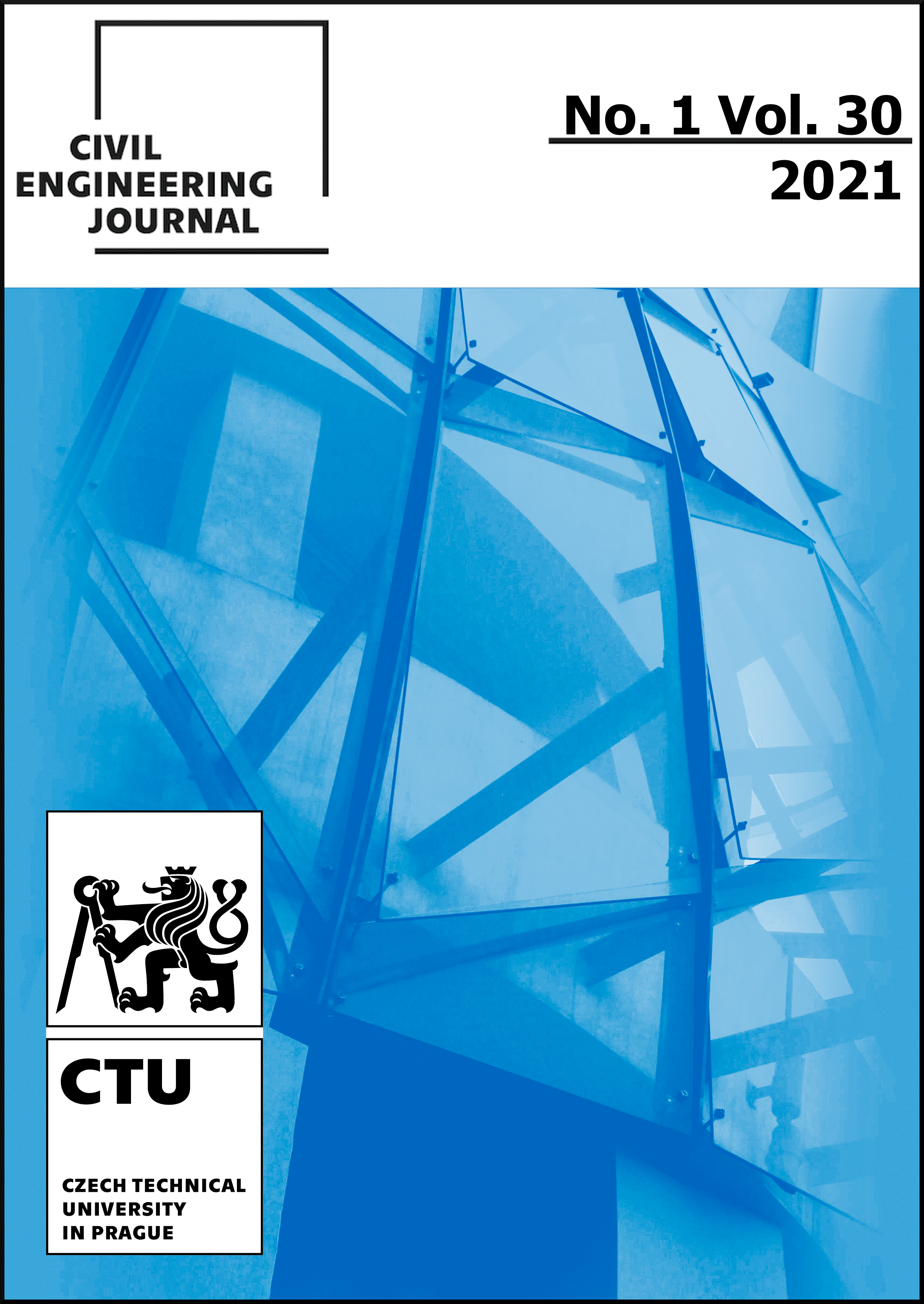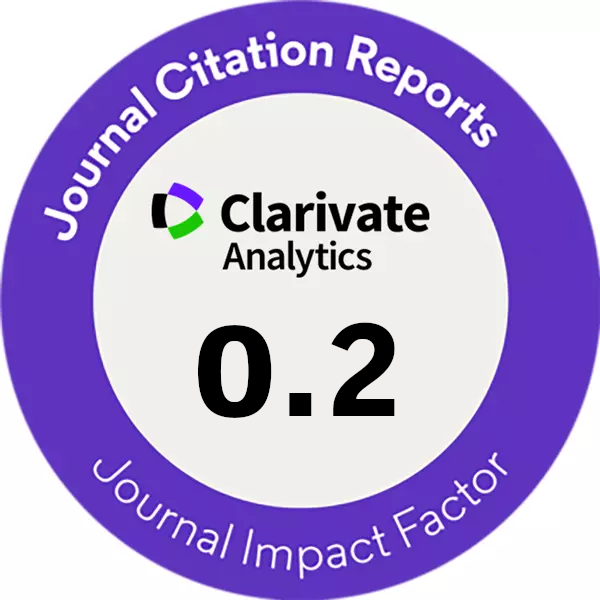ANALYZING THE EFFECT OF MICRO RUBBER, MICRO SIO2, AND NANO SIO2 IN MICROCRACKS IN SELF-CONSOLIDATING CONCRETE (SEM OBSERVATION)
DOI:
https://doi.org/10.14311/CEJ.2021.01.0022Keywords:
Self-consolidating concrete, Micro rubber waste, Microcrack, SEMAbstract
The present study is an attempt to analyze the effect of micro rubber waste in self- consolidating concrete (SCC) and to compare the concrete containing SCC with conventional additives such as micro SiO2 and nano SiO2. The use of rubber waste can be substantially important from the environmental point of view. Hence, concrete specimens containing 1, 3 and 5% micro rubber waste were made. Moreover, specimens containing 1, 3 and 5% nano SiO2 and 4, 8 and 12% micro SiO2 were prepared to compare their behaviour and microstructure with each other and with the witness specimens. The effect of the other parameters such as the specimen age and the w/c ratio on the microstructure of concrete containing rubber waste was also studied. Thereafter, the specimens were imaged using a scanning electron microscope (SEM) to observe and compare the microcracks in the concrete and secondary electron beam (SE) was used to obtain their images. The results of the microstructural consideration of different specimens showed that 1% of micro rubber waste can improve the behaviour of self-consolidating concrete, but the concrete microstructure strength and quality decline with an increase in its amount.
Downloads
References
H. Okamura, M. Ouchi. “Self-consolidating concrete, Development, present use and future” 1st International RILEM Symposium on Self-Consolidating Concrete (1999).
H. Okamura, M. Ouchi. “Self-consolidating concrete” J. Adv. Concr. Technol., 1 (2003), pp. 5-15
H. Okamura, M. Ouchi. “Application of self-consolidating concrete in Japan” 3rd International RILEM Symposium on Self-Consolidating Concrete (2003).
M. Ouchi. “Self-compactability of fresh concrete” 1st International RILEM Symposium on Design, Performance and Use of Self-Consolidating Concrete (2005).
American Concrete Institute ACI 237R-07 Self-consolidating csoncrete ACI Manual of Concrete Practice, Part 1, Farmington Hills, Michigan (2007).
N. Makul. “Combined use of untreated-waste rice husk ash and foundry sand waste in high-performance self-consolidating concrete”. Results in Materials. 1 (2019) 10014.
Adili, E; Sohrabi, M. R; Nehi, H. M “Prediction of microcracks in concrete using fuzzy systems” journal of intelligent & fuzzy system. Vol 27. No 3. pp 1161-1168, 2014.
Diamond, S. and Huang, J. “The ITZ in concrete- a different view based on image analysis and SEM observation” Cement and Concrete Composites. 23 (2001) 179-188.
Feiteira, J; Tsangouri, E; Gruyaert, E; Lors, C; Louis, G and Debelie, N “Monitoring crack movement in polymer-based self-healing concrete through digital image correlation, acoustic emission analysis and SEM in-situ loading” Materials & Design, Vol 115, 5 February 2017, Pages 238-246.
A. Santamaría , A. Orbe, M.M. Losañez, M. Skaf, V. Ortega-Lopez, Javier J. González. “Self-compacting concrete incorporating electric arc-furnace steelmaking slag as aggregate”. Materials and Design 115 (2017) 179–193.
Md. Safiuddin, M. Yakhlaf and K.A Soudki. “Key mechanical properties and microstructure of carbon fibre reinforced self-consolidating concrete”. Construction and Building Materials. Vol 164. 2018. PP 477-488.
Downloads
Published
Issue
Section
License
Copyright (c) 2021 Author

This work is licensed under a Creative Commons Attribution-NonCommercial 4.0 International License.
Authors who publish with this journal agree to the following terms:
- Authors retain copyright and grant the journal right of first publication with the work simultaneously licensed under a Creative Commons Attribution License that allows others to share the work with an acknowledgement of the work's authorship and initial publication in this journal.
- Authors are able to enter into separate, additional contractual arrangements for the non-exclusive distribution of the journal's published version of the work (e.g., post it to an institutional repository or publish it in a book), with an acknowledgement of its initial publication in this journal.
- Authors are permitted and encouraged to post their work online (e.g., in institutional repositories or on their website) prior to and during the submission process, as it can lead to productive exchanges, as well as earlier and greater citation of published work (See The Effect of Open Access).











